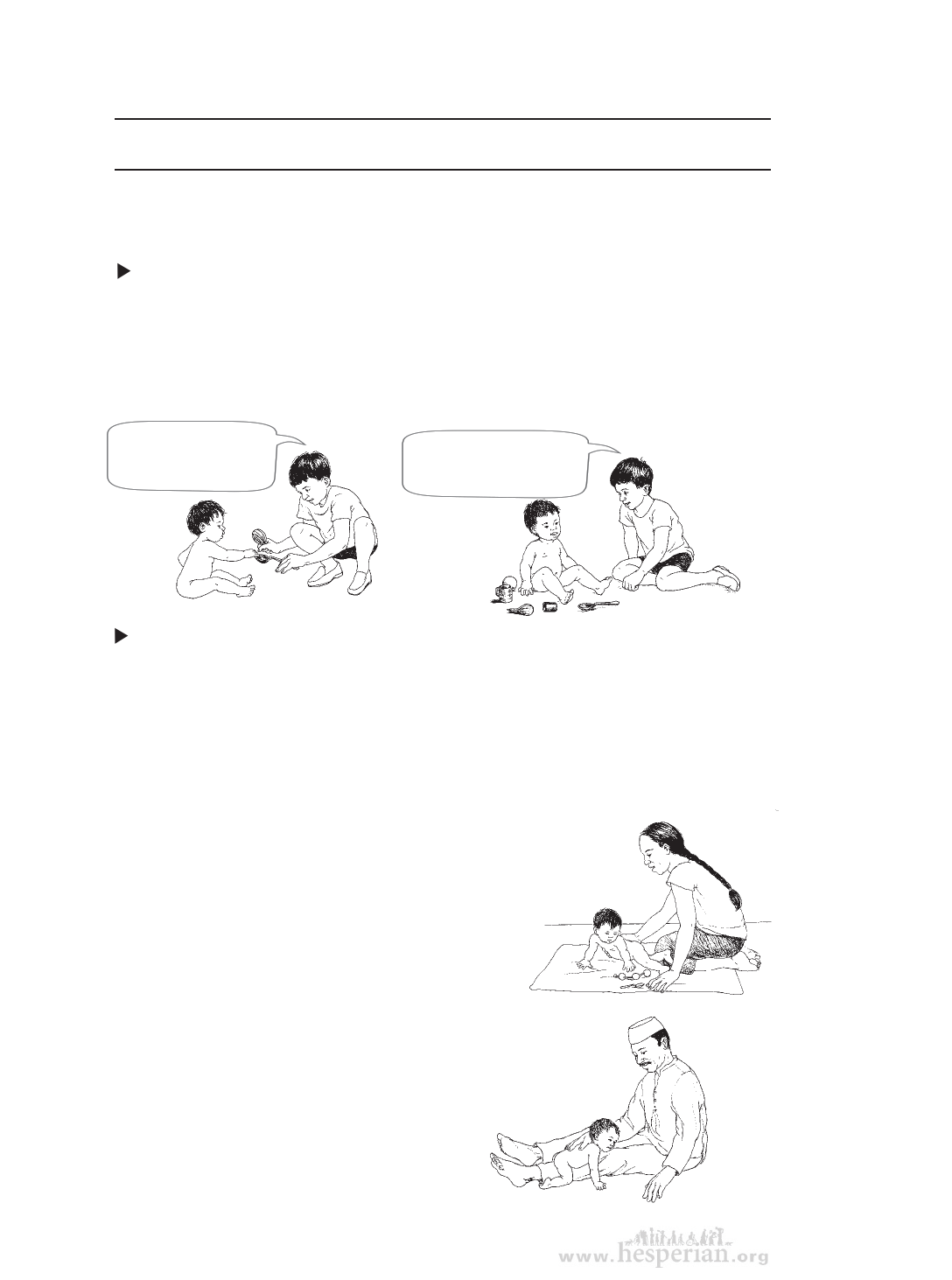
90 m o v e m e n t
ACTIVITIES
If your child can see a little, be sure to adapt these activities to best use
his remaining sight (see Chapter 4).
To help your child sit by himself
Place your child in a sitting position with his legs apart and his arms
in front to support himself. Show him some toys and then put them in
different places, like between his legs, and on the right and left sides
of his body. As he moves to find the toys, he will use and develop his
balance.
Here’s your spoon,
Noi — and your
rattle.
Where did the spoon
and rattle go? Can you
find them?
To help your child learn to crawl
When your child can lie on his stomach and push his upper body up
with his arms straight, he is ready to start learning to crawl. The activities
in this section can help him learn to move his upper and lower body
separately, to put weight on his arms and legs, and to shift his weight from
side to side. All these skills are important for learning to crawl and should
be done in the order shown here.
1. When your child is lying on his stomach, put some
toys at his side near his waist. Then help him
push up on one hand and reach for a toy with
the other hand.
2. Place your child over one of your legs so
that his arms are straight and his knees
are bent. To help him bear weight on his
arms and legs, and to shift his weight from
side to side, rock your leg from side to side
while pushing down gently on his
shoulders and lower back.
helping children who are blind